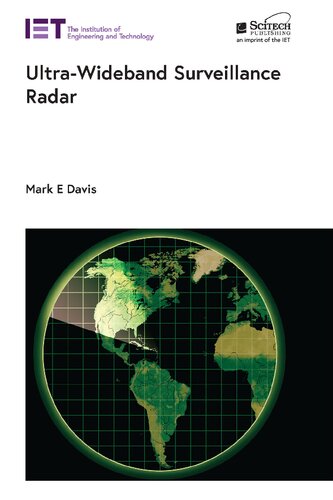

Most ebook files are in PDF format, so you can easily read them using various software such as Foxit Reader or directly on the Google Chrome browser.
Some ebook files are released by publishers in other formats such as .awz, .mobi, .epub, .fb2, etc. You may need to install specific software to read these formats on mobile/PC, such as Calibre.
Please read the tutorial at this link: https://ebookbell.com/faq
We offer FREE conversion to the popular formats you request; however, this may take some time. Therefore, right after payment, please email us, and we will try to provide the service as quickly as possible.
For some exceptional file formats or broken links (if any), please refrain from opening any disputes. Instead, email us first, and we will try to assist within a maximum of 6 hours.
EbookBell Team

4.3
8 reviewsUltra-Wideband Surveillance Radar is an emerging technology for detecting and characterizing targets and cultural features for military and geosciences applications. To characterize objects near and under severe clutter, it is necessary to have fine range and cross range resolution. The resultant wide bandwidth classifies the systems as ultra-wideband, requiring special treatment in system technology and frequency allocation.
This book explores several UWB surveillance radar prototypes, including Hostile Weapons Locator System (HOWLS), Multibeam Modular Surveillance Radar (MMSR), and geoscience synthetic aperture radar (GeoSAR). These prototype radars illustrated the early development of multi-mode capabilities leading to modern radar systems. Based on the results of these prototypes and recent radar technology publications a novel multi-mode, multi-channel radar is presented and analysed.
The book begins with a history of airborne surveillance radar, then goes on to provide systematic and detailed coverage of the following topics and technologies: surveillance radar detection; surveillance radar modes; UWB antennas; ultra-Wideband SAR processing; interferometric radar modes; UWB ground moving target detection; UWB spectrum compliance; and UWB multimode operation.
The first book to cover these new capabilities, this is an important reference for radar engineers, especially those working in geosciences and military applications. It is also relevant to academic and advanced engineering researchers developing new radar technologies and algorithms for image processing, as well as the advanced electromagnetics research community.